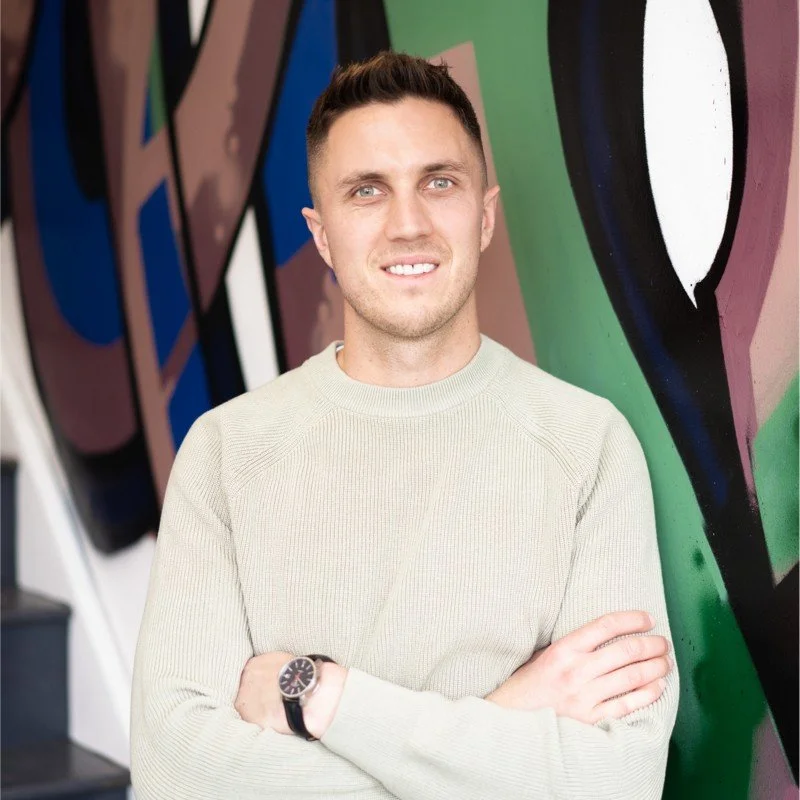Interrogating design with roddy clarke
We were supposed to be on our way home. Bar Basso was still echoing as we walked down the street in search of snacks and one last beer that we didn’t have to queue for. The convenience store lived up to its name not only providing us with salty fare and a couple of Ichnuasas, but also a chance encounter with journalist Roddy Clarke.
Whose job is it to challenge design? Designers yes, but sometimes it’s easy to become locked in your own world. The cultural commentators are on the periphery, able to both peer in and look out.
They offer perspective and while not everyone always agrees, they do their job by sparking debate. After spending time observing, addressing and discussing various pieces and exhibitions in Milan, we found ourselves in an hour long conversation with Roddy.
It was here, in the early hours of the morning, that we talked about the ideology of growth, greenwashing and why design matters.
Slightly more clear-eyed a week later, we asked him his thoughts on design and sustainability.
How do you approach interrogating and examining design and designers, especially at somewhere as vast as Milan Design Week?
When approaching something as large as Milan it can be really daunting but I try and see as much as I can as it’s often things that aren’t on my radar which surprise and move me the most. Often the larger brands can become quite predictable with their installations and for me, I love to meet new emerging designers who have a huge passion for changing the industry for the better. I love design but ultimately it’s the designers story I want to explore.
What do you think is the most important piece of information to get across when writing about design?
When writing about design it’s critical to understand the purpose of what has been created. We live in a world where we can’t just design for designs sake anymore. We have pressing issues upon us which we have to address and design can offer solutions to these. Hence when writing about design it’s imperative we translate that purpose behind each piece to the reader.
Was there anything in particular at Milan that really blew you away or made you think differently?
I was really impressed by an installation by HEAD Geneve - the Swiss school - which featured a speakeasy bar hidden behind an alpine mountain which was adorned with the names of 260 female designers to highlight the long lineage of women who have changed the industry for the better. Going around the mountain was a train which featured 7 hand blown glass designs by students who had created the designs based on a designer they were inspired by. While the glasses themselves, and the cocktails, were beautiful, it was the strong narrative which moved me and I love witnessing this being passed down to upcoming generations of designers. After all education is key to change.
What challenges in the industry would you like to see addressed more by designers?
I would love to see brands addressing topics such as this to drive real change be it circularity, equality and diversity. Design is such a powerful tool towards creating change so we need to utilise our resources in coming together with real positive action.
Whose sustainability approach or business model do you think is particularly admirable within the design industry that could impact how other designers work?
I am always impressed by the Norwegian Presence showcase which focuses on inherent sustainable values and responsible production methods. Brands such as Vestre and Hydro who support this initiative are leaders in sustainability and are driving real change, especially in collaborating with young designers like this.
It’s so easy for people to assume sustainable design needs to be serious; what we noticed visiting various places/design institutions in Milan is the playfulness that historic designers (like Castiglioni) bring into their designs. Do you think that having fun with sustainable design is a good pathway to normalising it and making an impact?
Sustainability is always deemed a dry and ‘worthy’ topic - I have been mocked for this before but for me, it’s an underlying principle that shouldn’t take away from the aesthetic or playfulness of design. It should just govern everything we do and in that way it becomes the norm. There are so many innovative ways to approach design today and drawing on history, finding the fun within it and bringing something beautiful to our attention is what will connect us to the work - while sustainability underpins the way it has been manufactured and how it will last and endure going forward.

